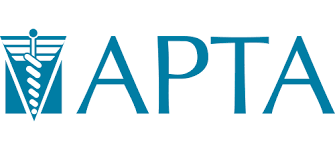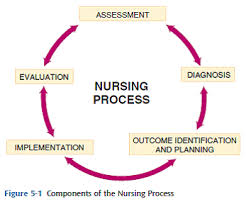A Comprehensive Soap Note for an STI HPV Infection Order Instructions: Purpose: To explain what each section of the SOAP note should include. Remember that Nurse Practitioners treat patients in a holistic manner and your SOAP note should reflect that premise.

SUBJECTIVE DATA: What the patient tells you but organized by you in a logical fashion
Chief Complaint (CC):
1. Location
2. Quality
3. Quantity or severity
4. Timing, including onset, duration, and frequency
5. The setting in which it occurs
6. Factors that have aggravated or relieved the symptom
7. Associated manifestations
Medications: list each one by name with dosage and frequency
Allergies: include specific reactions to medications, foods, insects, environmental
Past Medical History (PMH): Illnesses, hospitalizations, risky sexual behaviors. Include childhood illnesses
Past Surgical History (PSH): Dates, indications, and types of operations
OB/GYN History: (if applicable) Obstetric history, menstrual history, methods of contraception and sexual function
Personal/Social History: Tobacco use, Alcohol use, Drug use. Patient’s interests, ADL’s IADL’s if applicable. Exercise, eating habits
Immunizations: Last Tdp, Flu, pneumonia, etc.
Family History: Parents, Grandparents, siblings, children
Review of Systems: Go Head to toe. Cover each system that covers the Chief Complaint, History of Present Illness and History (this includes the systems that address any previous diagnoses). YOU DO NOT NEED TO DO THEM ALL UNLESS YOU ARE DOING a TOTAL H&P. Remember, this is what the patient tells you.
General: any recent weight changes, weakness, fatigue, or fever
Skin: rashes, lumps, sores, itching, dryness, changes, etc.
HEENT:
Neck:
Breasts:
Respiratory:
Cardiovascular:
Gastrointestinal:
Peripheral vascular:
Urinary:
Genital:
Musculoskeletal:
Psychiatric:
Neurological:
Hematologic:
Endocrine:
OBJECTIVE DATA: This is what you see, hear, feel when doing your physical exam. Again, you go head to toe and you only need to examine the systems that are pertinent to the CC, HPI, and History unless you are doing a total H&P. Do not use WNL or normal. You must describe what you see.
Here is where the vital signs go. Include ht and wt and BMI
General: General state of health, posture, motor activity and gait. Dress, grooming, hygiene. Odors of body or breath. Facial expression, manner, affect and reactions to people and things. Level of conscience.
SKIN:
HEENT:
Neck:
Chest/Lungs: ALWAYS INCLUDE IN YOUR PE
Heart/Peripheral Vascular: ALWAYS INCLUDE THE HEART IN YOUR PE
Abdomen:
Genital:
Musculoskeletal:
Neurological:
ASSESSMENT: Need to list your priority diagnosis(es) first. For each priority diagnosis, list at least 3 differential diagnoses. Support your selection with evidence.
Example: Migraine headache (tension headache, cluster headache, brain tumor)
Hypertension (renal disease, stress, renal artery stenosis)
For holistic care you need to include previous diagnoses and indicate whether these are controlled or not controlled and remember to include that in your treatment plan.
What evidence or guidelines did you use to support your diagnoses?
PLAN: Treatment plan. Labs, x-rays, etc. Include both pharmacological and non-pharmacological strategies. Include alternative therapies. When do they need to follow-up? Any referrals? Consultations?
Health Promotion: What does the patient/ family need to do to promote their health? Exercise, healthy diet, safety, etc.
Disease Prevention: For the patient’s age, what needs to be done to detect disease early…fasting lipid profile, mammography, colonoscopy, immunizations, etc.
What evidence did you use to support your treatment plan?
REFLECTION: What did you learn from this experience? What would you do differently? Do you agree with your preceptor based on the evidence? Really think about what you are doing in clinical.
A Comprehensive Soap Note for an STI HPV Infection Sample Answer
A Comprehensive Soap Note for an STI (HPV Infection)
S: Subjective Information
Chief Complaint (CC): “I have small bumps on my genital area.”
History of Present Illness (HPI): Ms. Z is a 21-year-old white American woman who is a sexual worker present with complaints of the presence of small bumps that developed on her genital area since she began doing her current job six months ago. She describes the bumps her genital area as being flat-topped and darker than her normal skin tone. She also describes her vaginal discharge as foul smelling and occurs during sexual intercourse and complains of an aching pelvis and experiencing some abdominal pains. She further presents with similar bumps on her feet and nails that are causing irritation. The aggravating factor was sexual intercourse with no relieving factor. She has a normal menstrual cycle with no signs of infection or disease had last being on August 20th 2014, and the age of onset was 12 years. She has multiple sexual partners and one regular partner with similar bumps. She uses the birth control pills Drospirenone and Estradiol and never uses a condom. Her Pap test taken three months ago was inconclusive. She has a previous medical admission and surgical history with unknown allergies to medicine and no childhood illness.
Medications: Bath control pills Drospirenone and Estradiol 1 daily tablet PO.
Allergies: Uknown allergies to medications, foods, insects and environment.
Past Medical History (PMH): no history of an STI, admitted for alcohol poisoning for three days in March 2013, admitted for ecstasy overdose in June 2013, admitted for starvation and fed through a tube in January 2014.
Past Surgical History (PSH): Intentional Termination of Pregnancy
(ITOP) in March 2013.
OB/GYN History:
Obstetric History: GO, TO, AO and LO. Regular menstrual period that is on time and lasts for four days and the contraception method is the birth control pill Drospirenone and Estradiol, and she is extremely sexually active.
Menstrual History: Menarche occurred at 12 years old and her last period was on August 20th 2014, and her period is regular lasting for four days. The results of her last Pap test 3 months ago were unknown.
Contraception Method: Bath control pills Drospirenone and Estradiol 1 daily tablet PO.
Personal/Social History: she is single with no children and is a commercial sex worker at a local club. She takes at least “at least six bottles of alcohol, smokes a packet of cigarettes and occasionally takes ecstasy. She rarely and has a single regular sexual partner and multiple daily and lifetime partners. She has developed a low self-esteem after the attempted rape that occurred on her 20th birthday, and she ran away from home not reporting the case to the authorities or informing the mother. She never uses a condom despite knowing the risks and has no known hobbies.
Family History: mother whose age is unknown and today she is an alcoholic and living in a shelter for the homeless.”
Review of Systems:
General: Significant changed in appetite, fatigue and weakness with a considerable weight loss.
Gastrointestinal: she experiences abdominal pains.
Genital: She reported a foul smelling vaginal discharge with no itching or burning sensation.
Psychiatric: She admits having developed depression since the attempted rape incidence
O: Objective Information
Vital Signs: BP 96/74, P 76, R 12, T 37.50 C and W 100 lbs.
General: Ms. Z is a 21-year-old woman but appears five years older than her age. She is constantly biting her nails and unsettled displaying anxiety. She looks weak and frail with a bony framework. She is well kempt, but her face seems to be having traces of makeup that was left indicating she did not take a bath. She occasionally smiles with a strong perfume. She is eloquent in English and does not speak much although she was cooperative in answering the questions.
SKIN: Pale with no rushes.
HEENT: her eyes are sagged with equal round pupils and accommodation. She has normal hair distribution and normal oral mucosa and all the teeth.
Pelvic Exam: The external genitalia had a triangular escutcheon with multiple flesh-colored lesions (>0.5 cm) in the perineal area. There was no hymen and with a piercing at the clitoris and another just above the rectocele area. There was a thick, foul-smelling yellow discharge with small masses of warts with signs of inflammation. There was right adnexal cervical tenderness and severe cervical motion tenderness. The uterus was large, smooth and mobile.
Neurological: She is alert, conscious of the time and place, and responds appropriately.
A: Assessment
- Human Papillomavirus (HPV) infection. This is a small, double-stranded virus that mostly that affects the epithelial cells of the skin (Ramírez-Fort, Khan, Rady, & Tyring, 2013). This is the most likely condition as it affects the cutaneous epithelium and result into skin warts that are categorized with their epidemiological association with cervical cancer. Infection with low-risk HPV results into benign or low-grade abnormalities of the cervical cell, genital warts, and papillomas of the larynx. The high-risk HPV results into lesions that can turn into a tumor in undetected and untreated. It is passed through skin contact especially during sexual intercourse, but intercourse does not always have to be involved (Ramírez-Fort, Khan, Rady, & Tyring, 2013). The treatments include includes Podofilox 0.5% gel or solution, Imiquimod 5% cream, or Sinecatechins 15% ointment. Therapy that is provider-administered includes cryotherapy with liquid nitrogen or cryoprobe, podophyllin resin 10% – 25% in compound tincture of benzoin, or Trichloroacetic acid (TCA) or bichloroacetic acid (BCA) 80% – 90% (CDC, 2012)
- Herpes Simplex Virus (HSV). This virus is part of the alpha herpes virus subfamily of the herpes viruses and is of two types HSV – 1 and HSV – 2 (Karasneh & Shukla, 2011). It is a double-stranded DNA virus forming part of the alpha herpesviridae subfamily of viruses and distinguished using their antigenic differences in their protein envelope (Azwa & Barton, 2009). This is the second likely condition as its spread through sexual intercourse and especially where there is no condom use. The infection results into the development of lesions in the perennial area of the genitals (Azwa & Barton, 2009). This is treated with antiretroviral drugs such as acyclovir, famciclovir, and valacylovir oral or topical drugs. Alternative care is also effective that is dietary supplements, and these are, for example, L-lysine, aloe Vera, eleuthro, and Echinacea (Levitsky et al., 2008).
- Yeast Infection. Yeast is fungi that live in small colonies in the vagina, and an infection occurs when the yeast cell colonies increase in the vagina (Kaufmann, 2000). This is the least likely because it is not an acute condition and does not require sexual intercourse to develop. The warts are also not serious as they do not easily spread, and their treatment and side effects are not as serious as in HPV and HSV (Kaufmann, 2000). Treatment is often effective unless the infection is recurrent and often involves maintenance of proper hygiene. Pharmacological treatment involves the use of an antifungal cream, tablets, suppository, or ointment. A single flucunazole oral tablet dose is also effective. Azole medication is effective for long-term treatment and taken for seven to fourteen days (Mayo Clinic, 2014).
P: Plan
Diagnostics:
Pap Test/Pap Smear/Culture (HPV): Also known as a pap smear and investigates abnormal changes in the cervical cells. Cells to be used as samples are removed from the cervix, and they are cultured and observed through a microscope in the presence or absence of genital warts (Coutlée, Rouleau, Ferenczy, & Franco, 2005).
Antigen detection test (HSV): Fresh sore cells are scraped off they are then smeared on a microscope slide to find antigen markers on the cells found on the surface that are infected with the virus (Shulman et al., 2012).
Fungal Smear (Yeast infection): The superficial cells are obtained and cultured to isolate the yeast infection (Elin, Whitis, & Snyder, 2000).
Medication: Podofilox 0.5% gel.
Provider-administered: Cryotherapy with Trichloroacetic acid (TCA) 80% – 90% (CDC, 2012).
Health promotion: She should also continue with a special protein and carbohydrate diet for the next six months, urinate and wipe properly after sexual intercourse, wear panty liners, avoid douching both in general and during treatment. Continue with regular morning run and the ortho tricycle for the next on yea and avoid intercourse with the infected regular partner and reduce sexual activity.
Referral to a counselor would be necessary to provide therapy to deal with the trauma, maintain proper hygiene, and from the attempted rape including the need for a lifestyle change and a nutritionist for proper diet and nutrition.
Return in case of recurrence and persistence of symptoms
Disease Prevention: Regular pap tests
Pharmacological therapy employed the Centre for Disease Control and Prevention guidelines on Genital warts and the Canadian Consensus Guidelines on Human Papillomavirus. The non-pharmacological guidelines were from the American Psychological ACNP and Promotion Dietary Guidelines for Americans.
Reflection
The process of diagnosis and determining the appropriate treatment for patients is rigorous and requires a careful consideration of all symptoms the patient is presenting because certain disease may have similar symptoms. For the diagnostic process, I would place more emphasis on the psychological factors of the patient as they seem to be the underlying factors for the patient’s behaviors that are putting her at risk. I would also inquire of the client can change her job as it is the greatest risk factor. The regular partner should also seek medical intervention. The evidence provided is in line with HPV and its treatment guidelines by the various bodies hence I agree with the instructor.
A Comprehensive Soap Note for an STI HPV Infection References
Azwa, A., & Barton, S. E. (2009). Aspects of Herpes Simplex Virus: A Clinical Review. J Fam Plann Reprod Health Care, 35 (4), 237–242.
CDC. (February 8, 2012). Centers for Disease Control and Prevention. Retrieved September 14, 2014 from Centers for Disease Control and Prevention Web site: http://www.cdc.gov/std/treatment/2010/genital-warts.htm
Coutlée, F., Rouleau, D., Ferenczy, A., & Franco, E. (March/Aprl 2005). The Laboratory Diagnosis of Genital Human Papillomavirus Infections. Can J Infect Dis Med Microbiol, 83-91.
Elin, R. J., Whitis, J., & Snyder, J. (2000). Infectious Disease Diagnosis From a Peripheral Blood Smear. Laboratory Medicine, 31 (6), 324-328.
Karasneh, G. A., & Shukla, D. (2011). Herpes Simplex Virus Infects most Cell Types In vitro: Clues to its Success. Virology Journal, 8 (481), 1-11.
Kaufmann, D. A. (2000). The Fungus Link: An Introduction to Fungal Disease Including the Initial Phase Diet (2nd ed., Vol. 1). (B. T. Hunt, ed.) MediaTrition.
Levitsky, J., Duddempudi, A. T., Lakeman, F. D., Whitley, R. J., Luby, J. P., Lee, W. M., et al. (2008). Detection and Diagnosis of Herpes Simplex Virus Infection in Adults with Acute Liver Failure. Liver Transpl, 14, 1498-1504.
Mayo Clinic. (2014). Mayo Clinic. Imenukuliwa September 17, 2014 kutoka Mayo Clinic Web site: http://www.mayoclinic.org/diseases-conditions/yeast-infection/basics/treatment/con-20035129
Ramírez-Fort, M. K., Khan, F., Rady, P. L., & Tyring, S. K. (eds.). (2013). Human Papillomavirus: Bench to Bedside. Basel, Switzerland: Karger Medical and Scientific Publishers.
Shulman, S. T., Bisno, A. L., Clegg, H. W., Gerber, M. A., Kaplan, E. L., Lee, G., et al. (September 9, 2012). Clinical Practice Guideline for the Diagnosis and Management of Group A Streptococcal Pharyngitis: 2012 Update by the Infectious Diseases Society of America. Clinical Infectious Diseases , 1-19.
We can write this or a similar paper for you! Simply fill the order form!












